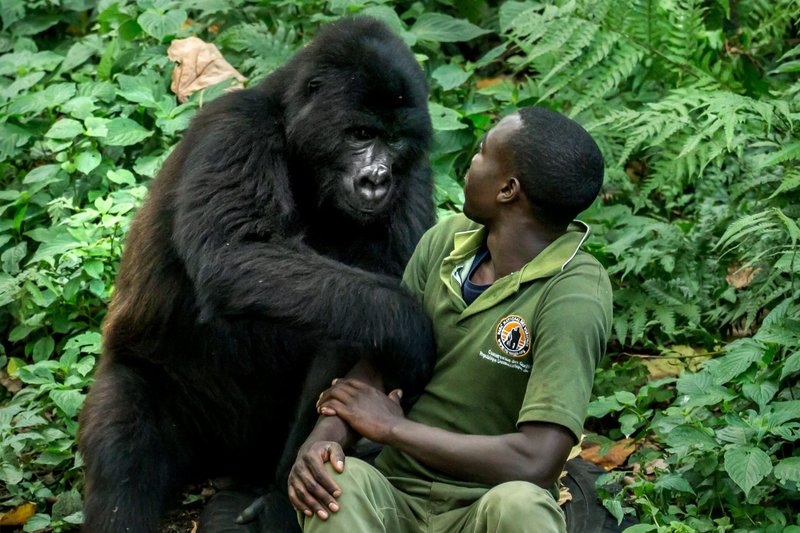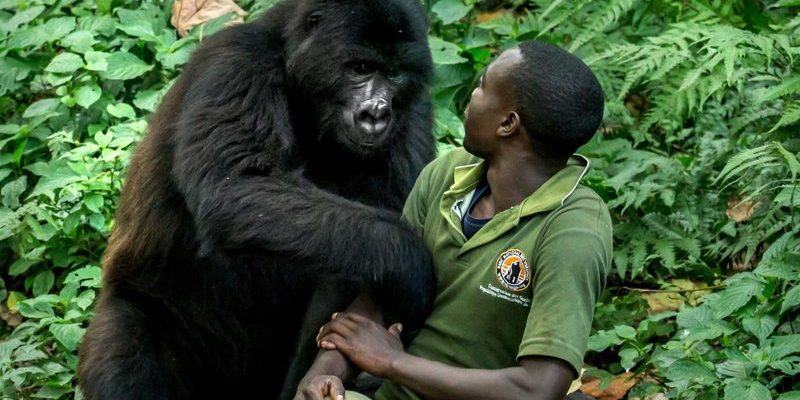
The Western Gorilla, known scientifically as *Gorilla gorilla*, is primarily found in the forests of Central Africa. Unlike their Eastern counterparts, Western Gorillas are generally more isolated. This isolation doesn’t mean they’re shy; these gorillas are intelligent social animals with complex behaviors and social structures. Picture them like massive, furry friends who live in tightly knit family groups, playing and communicating in their own unique way. But when it comes to interactions with humans, things can get tricky.
So, let’s take a closer look at why the Western Gorilla can pose risks to humans, the scenarios that lead to encounters, and how we can better understand and respect these incredible animals.
Understanding Western Gorillas
Before we dive into their potential dangers, it’s essential to understand what makes Western Gorillas unique. These animals are the largest primates on the planet, with adult males weighing between 300 to 500 pounds. That’s like having a small car suddenly standing in front of you! They inhabit dense rainforests and are primarily herbivorous, munching on leaves, stems, and fruits.
Social Structure
Western Gorillas are known for their strong family bonds. They live in troops led by a dominant male, often referred to as the silverback due to the distinctive gray hair that develops on their backs as they mature. This silverback is responsible for protecting the group, making it a vital role within the troop. The interactions among group members are rich; they groom each other, play, and establish hierarchies.
Communication Style
Gorillas have a range of vocalizations. From deep grunts to excited hoots, they communicate their feelings and intentions. Interestingly, they can also express fear or aggression through body language. If you’ve ever seen a dog growl or raise its hackles, Western Gorillas have similar ways to show when they feel threatened or agitated.
When Gorillas Might Be Dangerous
Now, let’s tackle the big question: when can Western Gorillas be dangerous to humans? It’s essential to remember that they are wild animals. Like any creature, they can react unpredictably if they feel threatened or cornered. Here are a few situations where gorillas might become dangerous:
Defending Their Territory
If humans encroach on their territory or seem to pose a threat, gorillas may react aggressively. This behavior is part of their instinct to protect their group. Imagine if someone wandered into your home uninvited; you’d be protective of your space too, right?
Protecting Their Young
Mother gorillas are incredibly protective of their young. If a human gets too close to a baby gorilla, the mother might not hesitate to charge to protect her offspring. This instinct can lead to serious situations. Remember how protective your own parents were when you were a kid? Gorillas feel that same fierce loyalty.
Stress and Provocation
Humans sometimes behave in ways that stress animals—like loud noises or quick movements. Gorillas, being sensitive and intelligent, can pick up on stress signals. A nervous or agitated gorilla may react with aggression. This is why it’s crucial to maintain a safe distance and respect their space if you ever encounter them in the wild.
Human-Gorilla Interactions
You might be wondering how humans and gorillas interact in the wild or in conservation areas. Often, these encounters are peaceful and beneficial if handled responsibly. However, issues can arise, especially in areas where poaching or habitat destruction is prevalent.
Wild Encounters
In the wild, gorillas generally avoid humans. They’ll often retreat if they notice a human presence. Yet, there are moments when tourists or researchers come across these majestic animals. Successful encounters often rely on guides who understand gorilla behavior.
Conservation and Awareness
Many organizations work diligently to protect gorillas and educate people. Conservationists emphasize respectful observation, encouraging people to keep a safe distance and minimize disturbances. It’s a delicate balance of enjoying nature while ensuring these animals feel safe.
Gorilla Conservation Efforts
Conservation plays a vital role in the story of the Western Gorilla. Numerous efforts are in place to protect their habitats and ensure their survival. This is crucial, not just for gorillas but for the biodiversity of their ecosystems.
Protected Areas
Many regions in Africa are designated as protected areas, allowing gorillas to roam freely without the threat of poaching or habitat loss. These protected spaces are essential in promoting healthy gorilla populations and ensuring they have ample room to thrive.
Community Involvement
Local communities often play a key role in conservation efforts. By involving them in tourism and education, people understand the importance of preserving their native wildlife. When local economies benefit from gorilla tourism, the incentive to protect these magnificent animals grows.
How to Stay Safe Around Gorillas
If you ever find yourself in the presence of Western Gorillas, it’s crucial to know how to behave around them. Here are some tips to ensure both your safety and the gorillas’ well-being:
- Keep Your Distance: Always respect their space. Staying at least 20-30 feet away helps them feel safe.
- Stay Calm: If you find yourself near gorillas, remain calm. Sudden movements or loud noises may agitate them.
- Follow Guidelines: Always follow the guidelines set by your tour guide or park ranger. They know the animals best and will keep you safe.
- Avoid Feeding: It might seem tempting, but feeding gorillas can lead to harmful behaviors and dependency on humans.
The Bottom Line
In conclusion, while the Western Gorilla can pose a danger to humans under certain circumstances, these instances are relatively rare and often avoidable. They are magnificent, intelligent creatures deserving of our respect. Understanding their behavior, habitat, and the challenges they face is essential for promoting peaceful coexistence.
By appreciating these gentle giants from a distance and supporting conservation efforts, we can ensure that Western Gorillas continue to thrive in their natural environments. Just like in any friendship, respecting boundaries is key. So, whether you’re just curious about wildlife or planning an adventure, remember: gorillas are best seen from afar, where they can be the kings of their forest without any fear.

